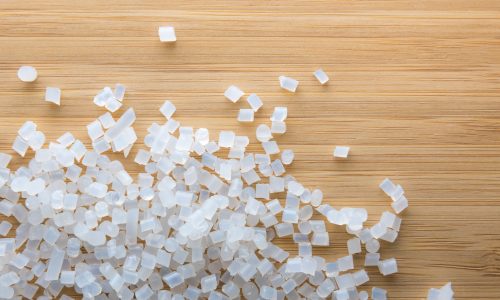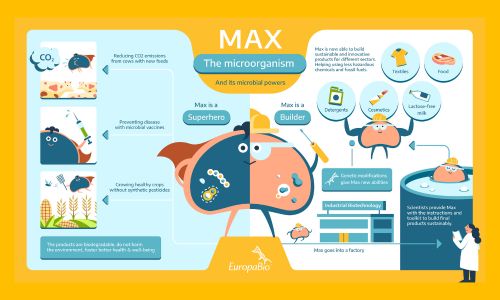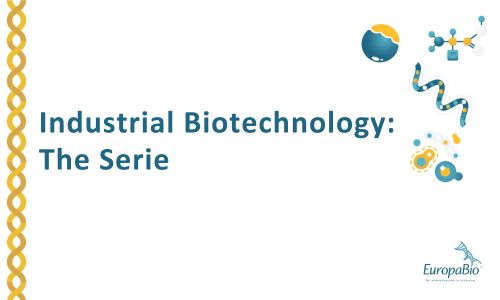EUBA position on the JRC LCA Methodology

OTHER
EUBA position on the JRC LCA Methodology
November 2021
The final methodology for life cycle assessment (LCA) of alternative feedstock for plastics production clearly and structurally favours fossil-based over bio-based plastics, and so undermines many of the deliverables set out by the European Green Deal. This is wildly at odds with the EU’s commitment towards reducing dependency on fossil-carbon and to becoming climate neutral by 2050. It also jeopardises the potential of innovation in bio-based products.
Over the past three years, industry stakeholders were given the opportunity to provide input to the development of the LCA methodology comparing bio-based with fossil-based plastic products, and European Bioplastics (EUBP) and other stakeholders invested time and effort in contributing to this study. Thus, we would like to note that a considerable amount of the input and expertise provided has not been adequately taken into account in the final methodology published in June 2021.
Therefore, we feel compelled to once again point out the most important flaws making it impossible to carry out an adequate, balanced evaluation. The final LCA methodology should improve significantly in the following areas:
Carbon sequestration. The proposed methodology undermines the key advantage of bio-based products, which is to remove carbon from the atmosphere, sequester it into products, so that it does not contribute to climate change . Biogenic carbon uptake should be accounted for in the biobased plastics assessment.
Comparing mature and immature production systems. Fossil-based plastics have experienced about 60 years of continuous improvement in raw material extraction, production, conversion, logistics, and end of life (EOL) options, while bio-based alternatives are at the beginning of their maturity/optimisation curve. The LCA methodology provides no real answer on how to compare such systems to avoid biased and unfair comparisons, and so can potentially stifle innovation in an early stage.
Data reporting requirements. There are still significant differences in data reporting requirements. For bio-based production systems, detailed requirements are listed, while for fossil-based systems, the industry average (black boxes) data sets are still acceptable.
Incorporation of Land Use Change (LUC). For bio-based plastics, LUC shall be included. For fossil-based plastics, the methodology is much less strict. Continuous improvement of agricultural practices, such as soil carbon uptake by improved management, needs to be taken into consideration in calculations, rather than being simply referred to as ‘additional environmental information’.
Inconsistent inclusion of indirect effects. Negative indirect effects for bio-based plastics, such as iLUC, are considered relevant and recommended to be included, while the inclusion of negative indirect effects of fossil-based plastics is explicitly ruled out.
Requirements for providing proof. For positive indirect effects of bio-based plastic products, such as soil carbon storage by improved agricultural management, proof is required, while no proof is required for negative indirect effects of bio-based materials, like iLUC.
Biodiversity impacts. The topic of biodiversity is strongly linked to the agricultural production process of bio-based products. For fossil-based products, there is much less attention for this topic, while there is a direct, clear link via climate change between the emissions of fossil carbon and the effects on biodiversity.
Reflecting end-of-life realities. All recycling options, including organic recycling, need to be treated equally and correctly represent existing and potential future waste infrastructure. To capture the real value of industrial composting in comparison to other EOL options, the LCA should be performed on waste stream level, rather than on product level.
Normalisation and weighting. In this LCA method, weighting is a mandatory step. Setting weighting factors can be a subjective process. Since the suggested factors are from 2018, it is unclear if they still represent current reality. Furthermore, EU weighting factors are also applied for non-EU production systems.
Feedstock supply data requirements. For bio-based plastics, feedstock certification schemes like RSB, ISCC PLUS, and Bonsucro are developed and in use. They deal with a wide range of topics such as biodiversity, emission reductions, carbon sequestration, and exposure to harmful substances. Nothing similar is in place for fossil-based feedstock. This aspect is completely excluded from a methodology comparing and judging the life cycles of bio-based and fossil-based systems, including their feedstocks.
Plastics are essential to modern life. There is a choice to make as to whether humanity continues to obtain the required carbon for plastics from underground deposits of oil and gas, or whether a transition towards obtaining this necessary carbon from the atmosphere is not just desirable but essential. But, unfortunately, the JRC study is again a mere comparative life cycle assessment between fossil and biobased products, affected by the above-mentioned weaknesses and without a vision for the future, since the pivotal role of bioplastics in building a renewable carbon-based economy is, de facto, ignored.
EUBA, therefore, consider the LCA methodology, as presented by the JRC, not fit for the purpose of comparing bio-based with conventional fossil-based plastics. We urge the Commission to stop the wider dissemination or application of this LCA and to start a new review of the LCA methodology. Otherwise, it will adversely affect EU progress in the field of sustainable and renewable climateneutral materials.
November 2021
The final methodology for life cycle assessment (LCA) of alternative feedstock for plastics production clearly and structurally favours fossil-based over bio-based plastics, and so undermines many of the deliverables set out by the European Green Deal. This is wildly at odds with the EU’s commitment towards reducing dependency on fossil-carbon and to becoming climate neutral by 2050. It also jeopardises the potential of innovation in bio-based products.
Over the past three years, industry stakeholders were given the opportunity to provide input to the development of the LCA methodology comparing bio-based with fossil-based plastic products, and European Bioplastics (EUBP) and other stakeholders invested time and effort in contributing to this study. Thus, we would like to note that a considerable amount of the input and expertise provided has not been adequately taken into account in the final methodology published in June 2021.
Therefore, we feel compelled to once again point out the most important flaws making it impossible to carry out an adequate, balanced evaluation. The final LCA methodology should improve significantly in the following areas:
Carbon sequestration. The proposed methodology undermines the key advantage of bio-based products, which is to remove carbon from the atmosphere, sequester it into products, so that it does not contribute to climate change . Biogenic carbon uptake should be accounted for in the biobased plastics assessment.
Comparing mature and immature production systems. Fossil-based plastics have experienced about 60 years of continuous improvement in raw material extraction, production, conversion, logistics, and end of life (EOL) options, while bio-based alternatives are at the beginning of their maturity/optimisation curve. The LCA methodology provides no real answer on how to compare such systems to avoid biased and unfair comparisons, and so can potentially stifle innovation in an early stage.
Data reporting requirements. There are still significant differences in data reporting requirements. For bio-based production systems, detailed requirements are listed, while for fossil-based systems, the industry average (black boxes) data sets are still acceptable.
Incorporation of Land Use Change (LUC). For bio-based plastics, LUC shall be included. For fossil-based plastics, the methodology is much less strict. Continuous improvement of agricultural practices, such as soil carbon uptake by improved management, needs to be taken into consideration in calculations, rather than being simply referred to as ‘additional environmental information’.
Inconsistent inclusion of indirect effects. Negative indirect effects for bio-based plastics, such as iLUC, are considered relevant and recommended to be included, while the inclusion of negative indirect effects of fossil-based plastics is explicitly ruled out.
Requirements for providing proof. For positive indirect effects of bio-based plastic products, such as soil carbon storage by improved agricultural management, proof is required, while no proof is required for negative indirect effects of bio-based materials, like iLUC.
Biodiversity impacts. The topic of biodiversity is strongly linked to the agricultural production process of bio-based products. For fossil-based products, there is much less attention for this topic, while there is a direct, clear link via climate change between the emissions of fossil carbon and the effects on biodiversity.
Reflecting end-of-life realities. All recycling options, including organic recycling, need to be treated equally and correctly represent existing and potential future waste infrastructure. To capture the real value of industrial composting in comparison to other EOL options, the LCA should be performed on waste stream level, rather than on product level.
Normalisation and weighting. In this LCA method, weighting is a mandatory step. Setting weighting factors can be a subjective process. Since the suggested factors are from 2018, it is unclear if they still represent current reality. Furthermore, EU weighting factors are also applied for non-EU production systems.
Feedstock supply data requirements. For bio-based plastics, feedstock certification schemes like RSB, ISCC PLUS, and Bonsucro are developed and in use. They deal with a wide range of topics such as biodiversity, emission reductions, carbon sequestration, and exposure to harmful substances. Nothing similar is in place for fossil-based feedstock. This aspect is completely excluded from a methodology comparing and judging the life cycles of bio-based and fossil-based systems, including their feedstocks.
Plastics are essential to modern life. There is a choice to make as to whether humanity continues to obtain the required carbon for plastics from underground deposits of oil and gas, or whether a transition towards obtaining this necessary carbon from the atmosphere is not just desirable but essential. But, unfortunately, the JRC study is again a mere comparative life cycle assessment between fossil and biobased products, affected by the above-mentioned weaknesses and without a vision for the future, since the pivotal role of bioplastics in building a renewable carbon-based economy is, de facto, ignored.
EUBA, therefore, consider the LCA methodology, as presented by the JRC, not fit for the purpose of comparing bio-based with conventional fossil-based plastics. We urge the Commission to stop the wider dissemination or application of this LCA and to start a new review of the LCA methodology. Otherwise, it will adversely affect EU progress in the field of sustainable and renewable climateneutral materials.



